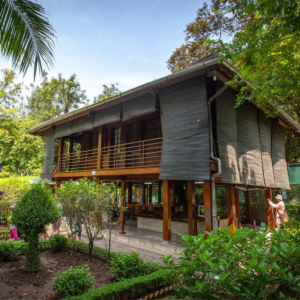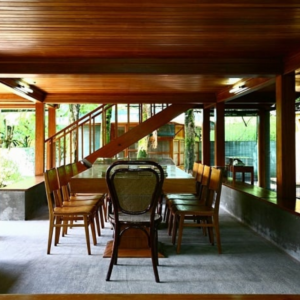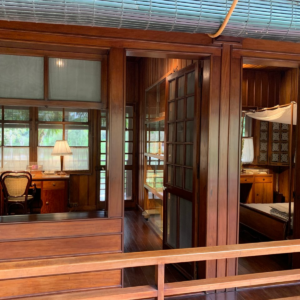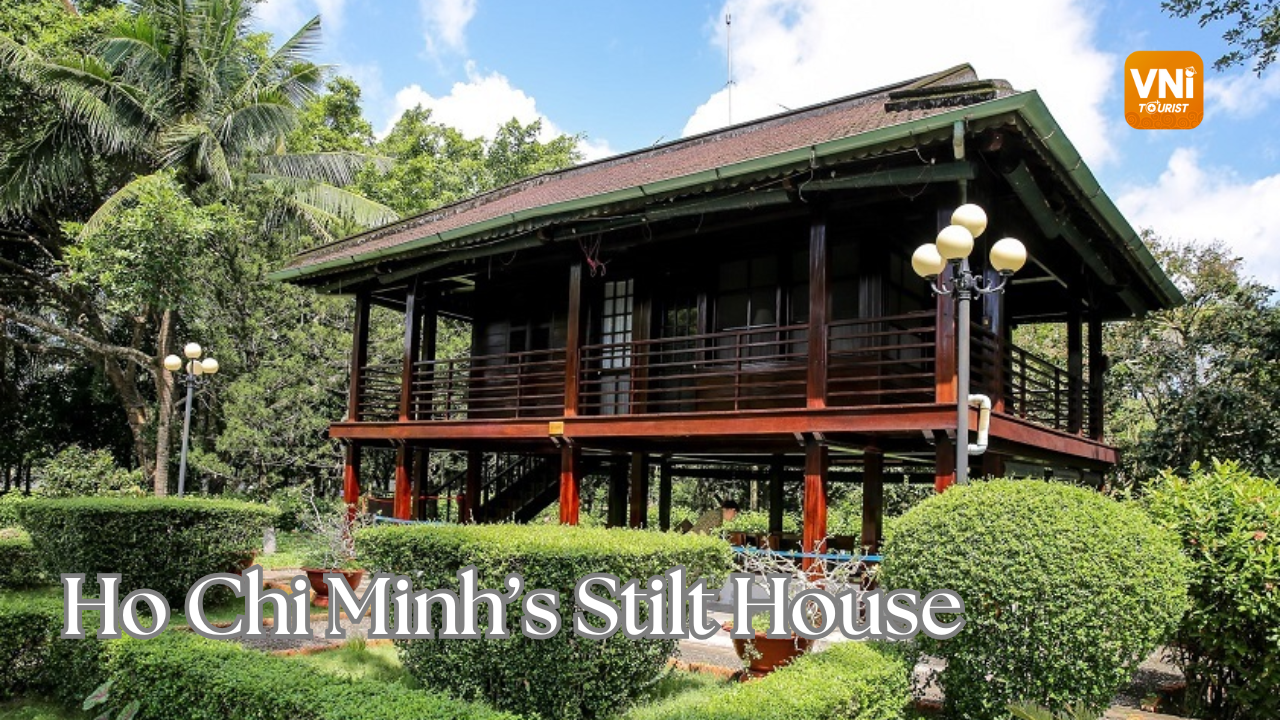Ho Chi Minh’s Stilt House – A Journey Through History in Hanoi
Discover Ho Chi Minh’s Stilt House – A Symbol of Simplicity and Leadership
Ho Chi Minh’s Stilt House (Nha San Bac Ho) is a historical treasure in Hanoi, offering visitors a glimpse into the simple lifestyle of one of Vietnam’s greatest leaders. Built in 1958, this humble wooden house was inspired by traditional stilt houses found in rural Vietnam. It was home to President Ho Chi Minh during the last decade of his life. Today, the stilt house stands as a symbol of modesty, patriotism, and a deep connection with nature. For those exploring Hanoi, this peaceful destination is a must-visit site filled with history and meaning.
About Ho Chi Minh’s Stilt House

Ho Chi Minh’s Stilt House is a simple wooden house located within the Presidential Palace Complex in Ba Dinh District, Hanoi. Built in 1958, it served as the residence and workplace of President Ho Chi Minh during the last 11 years of his life. Inspired by the traditional stilt houses of Vietnam’s ethnic minorities, the house was designed to reflect Ho Chi Minh’s modest lifestyle and deep connection with nature. Despite his role as the country’s leader, he chose to live in this humble two-room house rather than the grand Presidential Palace nearby. The house is surrounded by lush gardens, a tranquil fishpond, and fruit trees, creating a peaceful environment for work and contemplation. Today, it stands as a symbol of simplicity, patriotism, and dedication, offering visitors a glimpse into the life of one of Vietnam’s most revered leaders.
Why Visit Ho Chi Minh’s Stilt House?
Visiting Ho Chi Minh’s Stilt House offers a unique opportunity to connect with Vietnam’s history and the legacy of its most beloved leader. The house is a living reminder of Ho Chi Minh’s modesty and simple lifestyle, reflecting his dedication to serving the people. Walking through the house and its surrounding gardens, visitors can gain insights into his daily life and experience the peaceful environment that inspired his work. The traditional architecture of the house, built on stilts, stands in harmony with the natural surroundings, offering a glimpse of rural Vietnam right in the heart of Hanoi.
Beyond its historical significance, the house is part of the Ho Chi Minh Mausoleum Complex, making it easy for visitors to explore other key landmarks, such as the Presidential Palace, One Pillar Pagoda, and Ho Chi Minh Museum. The serene gardens, tranquil fishpond, and lush greenery provide a peaceful escape from the bustling streets of Hanoi, making it an ideal spot for quiet reflection and learning about Vietnam’s journey to independence. Whether you’re a history enthusiast or a curious traveler, Ho Chi Minh’s Stilt House is a must-visit destination that offers both inspiration and education.

How to Visit
– Location: Presidential Palace Complex, Ba Dinh District, Hanoi, Vietnam. The stilt house is part of the Ho Chi Minh Mausoleum Complex, located behind the Presidential Palace.
– Opening Hours:
- Summer (April to October): 7:30 AM – 4:00 PM
- Winter (November to March): 8:00 AM – 4:00 PM
- Closed on Monday and Friday afternoons.
– Entry Fee:
- The visit is included in the Ho Chi Minh Mausoleum Complex ticket, which grants access to the stilt house, Ho Chi Minh Museum, and other nearby attractions.
– How to Get There:
- By Taxi/Grab: Approximately 10 minutes from Hanoi’s Old Quarter.
- By Bicycle or Walking: Ideal for those already exploring nearby sites like One Pillar Pagoda and the Ho Chi Minh Mausoleum.
– Best Time to Visit:
- Morning: The atmosphere is peaceful, and the soft light makes it a great time for photography and enjoying the gardens.
- Weekdays: To avoid the larger crowds typically seen on weekends and holidays.
Nearby Attractions and Must-Try Food Around Ho Chi Minh’s Stilt House
Nearby Attractions You Shouldn’t Miss
- Hanoi Flag Tower (10-minute walk)
Built in the early 19th century, this iconic structure is one of Hanoi’s oldest landmarks. Climb to the top for panoramic views of the city and the surrounding historical sites. - Imperial Citadel of Thang Long (12-minute walk)
A UNESCO World Heritage Site, this ancient citadel dates back over 1,000 years. It offers a fascinating glimpse into Vietnam’s imperial history with well-preserved artifacts and archaeological treasures. - Ho Chi Minh Museum (5-minute walk)
Just steps from the Stilt House, this museum offers a deeper understanding of Ho Chi Minh’s life and his contributions to Vietnam. The exhibits are both educational and inspiring. - Phan Dinh Phung Street (15-minute walk)
Known as Hanoi’s most beautiful street, Phan Dinh Phung is lined with century-old dracontomelon trees and charming colonial villas. Take a leisurely stroll to soak in the peaceful ambiance. - Cua Bac Parish Church (15-minute walk)
This stunning Catholic church combines French and Vietnamese architectural styles. Built in 1932, it’s a peaceful spot to visit and take photos.
Must-Try Food Nearby
- Bun Dau Mam Tom (Tofu with shrimp paste and noodles)
- Where to Eat: Bun Dau Cay Da, 235B Thuy Khue (10-minute drive)
A quintessential Hanoi dish made of crispy tofu, fermented shrimp paste (mam tom), rice noodles, and fresh herbs. For the best experience, try it with fried pork or boiled pork belly.
- Where to Eat: Bun Dau Cay Da, 235B Thuy Khue (10-minute drive)
- Ga Tan (Chicken Stew with Herbs)
- Where to Eat: Ga Tan Hang Bo, 24 Hang Bo Street (10-minute drive)
A comforting dish of chicken slow-cooked with medicinal herbs, lotus seeds, and green beans. It’s a hearty meal perfect for a midday break.
- Where to Eat: Ga Tan Hang Bo, 24 Hang Bo Street (10-minute drive)
- Bun Rieu Cua (Crab Noodle Soup)
- Where to Eat: Bun Rieu Cua Hang Bac, 11 Hang Bac Street (12-minute drive)
This vibrant soup is made with rice noodles, fresh tomatoes, and a flavorful crab-based broth. A squeeze of lime and fresh herbs make it irresistible.
- Where to Eat: Bun Rieu Cua Hang Bac, 11 Hang Bac Street (12-minute drive)
- Bun Thang (Thang Noodle Soup)
- Where to Eat: Bun Thang Ba Duc, 48 Cau Go Street (15-minute drive)
A delicate noodle soup with shredded chicken, eggs, pork, and a clear, aromatic broth. This dish is a true reflection of Hanoi’s culinary elegance.
- Where to Eat: Bun Thang Ba Duc, 48 Cau Go Street (15-minute drive)
- Pho Cuon (Pho Rolls)
- Where to Eat: Pho Cuon Hung Ben, 33 Ngu XaStreet (15-minute drive)
This refreshing dish features flat rice noodles rolled with beef and herbs, served with a tangy dipping sauce. It’s a lighter, modern twist on the traditional pho.
- Where to Eat: Pho Cuon Hung Ben, 33 Ngu XaStreet (15-minute drive)

Conclusion
Ho Chi Minh’s Stilt House is more than just a simple residence—it’s a powerful symbol of humility, dedication, and love for the Vietnamese people. Visiting this historical site allows you to step into the personal life of one of Vietnam’s most beloved leaders. The peaceful surroundings, traditional architecture, and deep historical significance make it an essential stop on any Hanoi itinerary.
Plan your visit to Ho Chi Minh’s Stilt House and discover a unique part of Vietnam’s history! Take a peaceful walk through the lush gardens, learn about Ho Chi Minh’s simple life, and explore nearby historical landmarks. For detailed guides, travel tips, and must-visit destinations in Vietnam, visit VNITourist.com. Your journey into Vietnam’s history starts now!

